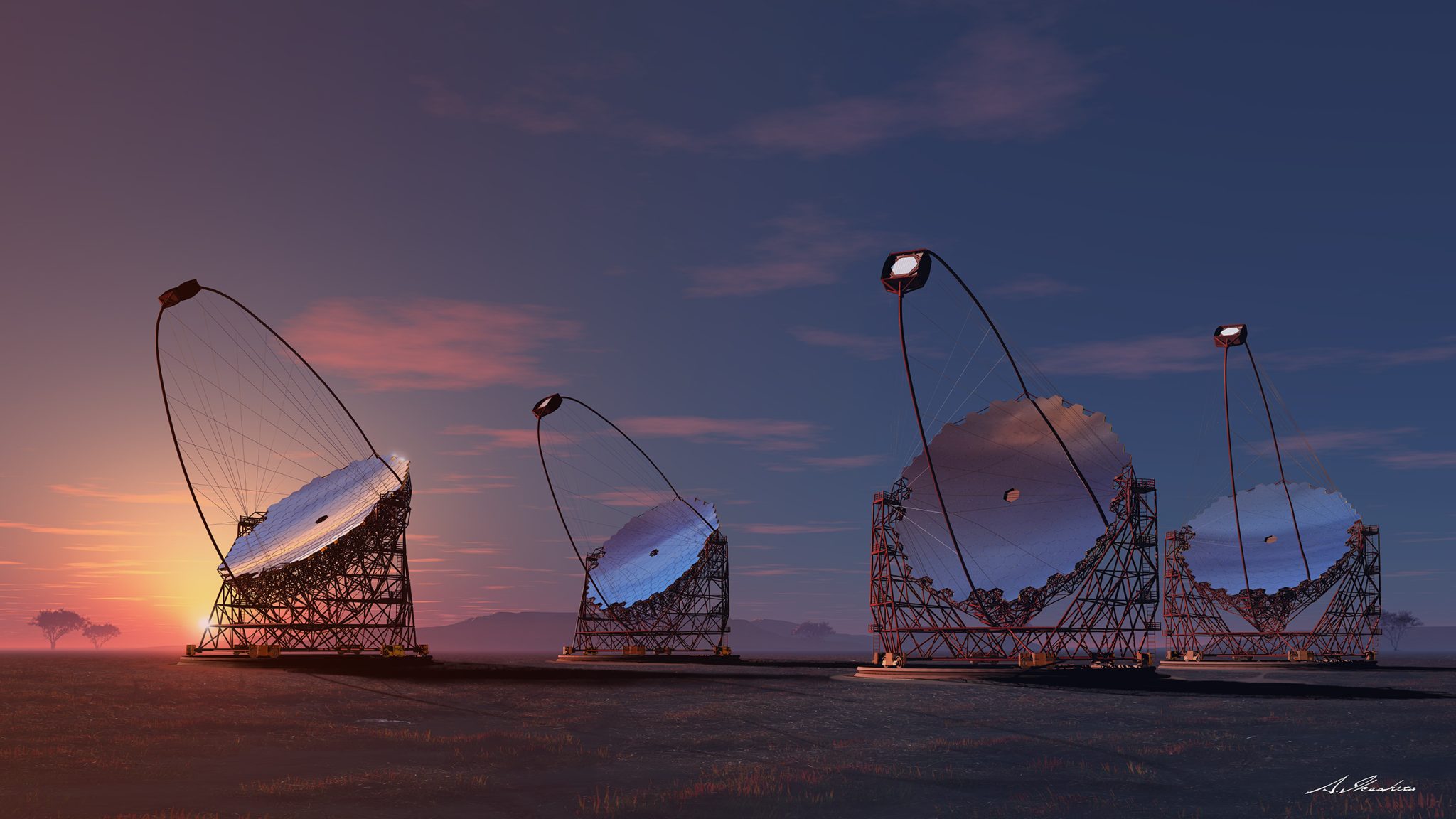La Palma, candidate to headquarter the CTA telescopes network [NOT TRANSLATED]

The Consortium CTA (Cherenkov Telescope Array, or network Cherenkov Telescopes), which met on March 26 in Heidelberg (Germany) with representatives from 13 countries (Argentina, Austria, Brazil, Spain, France, Italy, Japan, Poland, United Kingdom, Czech Republic, South Africa and Switzerland), finally decided to begin negotiations with the Spanish Economy and Finance Ministry (MINECO) for the possible location in the Roque de los Muchachos Observatory (ORM), on the island of La Palma (Canary Islands), of their large scientific facility located in the Northern Hemisphere. The network consists of 100 Cherenkov telescopes distributed between the two hemispheres for the detection of high-energy radiation, of which about 20 are installed in the Northern Hemisphere.
The choice of the ORM for the installation of the observatory of the Northern Hemisphere would be a major step for researchers of the IEEC which form part of the consortium. IEEC has a relevant presence within the consortium CTA and has several research groups that have been founding members of the project. The IEEC-CSIC group led by ICREA research professor Diego Torres and Ramón y Cajal researcher Emma Ona, acted as scientific coordinator and is responsible for developing one of the main modules of the control software of the observatory. The group led by IEEC-UB Professor Josep M. Paredes and Serra Hunter lecturer Marc Ribó participated in the definition of the scientific objectives and is involved in the design and production of micro-cameras for CTA. Finally, the group IEEC-UAB, led by Lluís Font, professor in the UAB Department of Physics, and Markus Gaug, postdoctoral researcher, coordinates the group of central calibration facilities of both, the individual telescopes and the entire network, including the calibration of the atmosphere, and participates, along with IFAE (Institute of High Energy Physics) in the development of advanced instrumentation for characterizing the atmosphere.
Ratings
“We are convinced – points out Rafael Rebolo, director of IAC – that if CTA-North headquarters are finally located on the Canary Islands, the project will be a great scientific success since we offer an extraordinary sky and exceptional infrastructure,” he adds. “With no doubt the strong support of MINECO and the Government of the Canary Islands to the Spanish candidature would have helped to that success.”
“According to Ramón García López, principal investigator of CTA in the IAC, “the installation of CTA-North would improve about 10 times the capacity of ORM for observing radiation from the most violent phenomena in the Universe, keeping the observatory at the forefront of astrophysical observation.”
“Yesterday’s decision -comments Manel Martínez, from the Institute of High Energy Physics (IFAE) in Barcelona and coordinator of CTA-Spain- is a very important step for the CTA project because it demonstrates the desire to build the North observatory and it is especially important for the Spanish community of gamma astronomy because we are determined that our science gives a qualitative leap thanks to the possibility of having the CTA-North in the ORM.”
Diego Torres says that “CTA allow us to access to explore sky with more sensitivity, which is little known at high energies and, among other things, it will give us the chance to detect energetic phenomena on time scales and brightness levels that are currently impossible to observe.”
Speaking about the technological side, Paredes says that “CTA is an observatory that will require a complex control system and the use of advanced technology in the field of communications, BigData, artificial intelligence and detectors, among others. It is also expected that its operations are coordinated with observatories and satellites worldwide.”
Cherenkov telescopes
CTA is an initiative that involves the construction of a new generation of Cherenkov telescopes to study the universe in very high energy gamma rays. These gamma rays bring us information of the most violent and extreme phenomena in the Universe.
CTA International collaboration will build two large complexes of observation in the Northern and Southern Hemispheres. La Palma has been the highest rated site to house the North observatory and competes with San Pedro Mártir Observatory in Mexico.
CTA telescopes have three different sizes. The biggest four LST have mirrors of 23 m in diameter. The LST are being designed by a team of universities and research institutes which aims at installing a prototype telescope at the Observatorio del Roque de los Muchachos (La Palma) next year. In this Observatory, there are already operating the MAGIC telescopes, considered among the best in the world in this range of high energies.
Researchers Contact
Emma Ona Wilhelmi
wilhelmi@ice.cat
Phone: +34 937379788
Marc Ribó
mribo@ub.edu
Phone: +34 934034986
Lluis Font
Lluis.font@uab.cat
Phone: +34 935812935 [NOT TRANSLATED]
